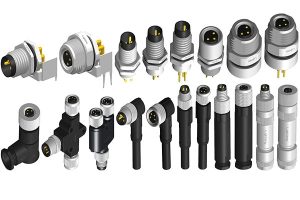In the world of electricity, voltage transformers play a crucial role in ensuring safe and efficient power distribution. These unassuming devices act as silent sentinels, quietly transforming voltage levels, and facilitating the smooth flow of electricity. In this blog post, we will explore the fundamental functions, types, and applications of voltage transformers, highlighting their significance in modern electrical systems. Do visit https://www.emscomn.com/transformers If you are looking for used transformers.
Understanding Voltage Transformers: Voltage transformers, also known as potential transformers (PTs), are electrical devices used to step down high voltage levels to a lower, more manageable voltage suitable for measurement, protection, and control purposes. They are primarily used in power transmission and distribution systems, as well as in various industrial applications.
Function and Operation: The primary function of a voltage transformer is to accurately reproduce voltage magnitudes and phase angles, while maintaining the desired ratio between the primary and secondary windings. By achieving this, voltage transformers enable measurement instruments, protective relays, and other equipment to work efficiently and accurately.
Voltage transformers operate on the principle of electromagnetic induction. They consist of two windings: the primary winding connected to the high-voltage side and the secondary winding connected to the low-voltage side. The primary winding carries the high voltage, while the secondary winding provides the stepped-down voltage output.
Types of Voltage Transformers:
- Electromagnetic Voltage Transformers: These are the most commonly used type of voltage transformers. They employ an iron-core construction and are typically accurate and reliable. Electromagnetic voltage transformers are suitable for a wide range of applications, from high-voltage transmission lines to industrial power systems.
- Capacitive Voltage Transformers: Capacitive voltage transformers use capacitors to achieve voltage reduction. They are compact, lightweight, and ideal for outdoor installations due to their insulation properties and resistance to environmental factors. Capacitive voltage transformers find applications in substations and distribution networks.
- Inductive Voltage Transformers: Inductive voltage transformers utilize an air-core or oil-immersed design. They are renowned for their high accuracy and wide bandwidth. Inductive voltage transformers are commonly employed in measuring and protection applications, where precise voltage measurements and fault detection are crucial.
Applications of Voltage Transformers:
- Metering and Instrumentation: Voltage transformers play a vital role in accurate energy metering, facilitating the billing process for consumers. They also enable the precise measurement of electrical parameters, such as voltage, current, power, and energy, for monitoring and control purposes.
- Protection and Relay Systems: Voltage transformers provide essential inputs to protective relays, helping detect and isolate faults in electrical systems. They ensure the reliable and timely operation of protective devices, safeguarding equipment and minimizing downtime.
- Control and Monitoring: Voltage transformers enable the monitoring of voltage levels across electrical networks, aiding in load management, system balancing, and fault analysis. They provide critical information for efficient control and operation of power systems.
Conclusion: Voltage transformers are indispensable components in modern electrical systems. Their ability to accurately transform voltage levels ensures the safe and efficient distribution of electricity. Whether in power transmission, distribution networks, or industrial applications, voltage transformers continue to play a pivotal role in maintaining the reliability and stability of electrical infrastructures. As technology advances, voltage transformers will evolve to meet the growing demands of our electrified world, enabling us to harness the power of electricity with greater precision and efficiency.





